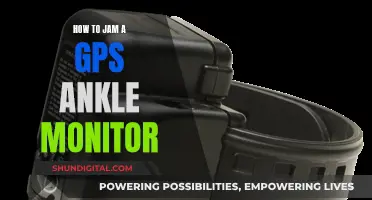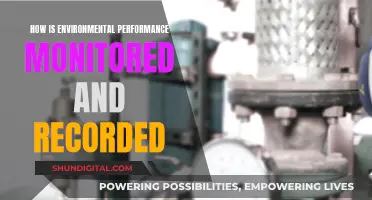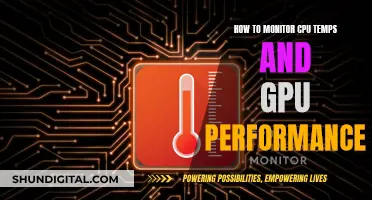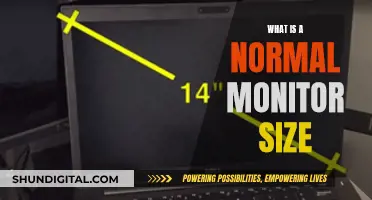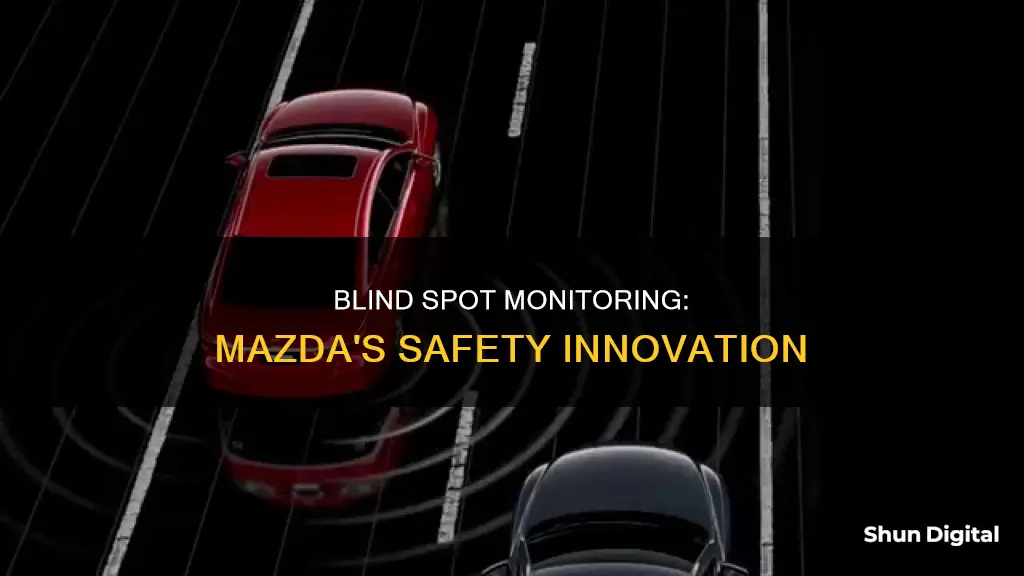
Mazda's Blind Spot Monitoring (BSM) system is an active safety technology that uses radar sensors to detect objects in the driver's blind spots, typically activating when the vehicle is travelling at a speed of 20 mph or greater. When the system detects an object, it alerts the driver through a combination of warning lights and, in some cases, audible alerts. The BSM system is designed to improve safety by assisting drivers in checking their blind spots and helping to avoid collisions, particularly during lane changes and when reversing. While generally effective, there have been reports of false alerts and sensitivity issues with the BSM system in some Mazda models.
| Characteristics | Values |
|---|---|
| System Name | Blind Spot Monitoring (BSM) |
| Vehicle Speed for Activation | 10 km/h (6.2 mph) or faster |
| Detection Area | Areas on both sides of the vehicle to the rear |
| Warning System | BSM warning lights, warning sound, and screen display |
| Radar Sensors | Located at both corners of the rear bumper |
| Adjustability | Sensitivity can be adjusted in Mazda Connect System |
| Limitations | May not operate on steep slopes, extremely wide roads, or when making sharp turns |
| Interference | May be affected by snow, ice, or mud on the rear bumper |
What You'll Learn
- Mazda's BSM system uses radar to monitor both sides of the vehicle when travelling at 20 mph or more
- The BSM system alerts the driver of vehicles in the detection area by illuminating a warning light in the mirror
- If the turn signal lever is operated in the direction of the warning light, the system will notify the driver with a chime sound
- The BSM may not operate normally if the rear side radar sensors cannot detect an object
- The BSM may operate when turning at intersections in urban areas or with stationary objects on the road

Mazda's BSM system uses radar to monitor both sides of the vehicle when travelling at 20 mph or more
Mazda's Blind Spot Monitoring (BSM) system is a handy feature designed to assist drivers in checking areas on both sides of the vehicle to the rear. The system uses real radar technology to monitor these areas when the vehicle is travelling at a speed of approximately 20 mph or more. This speed threshold is important for the system's operation, ensuring that the driver is notified of any vehicles in the detection areas.
The BSM system provides drivers with visual and audible alerts to enhance their awareness of the surroundings. When the system detects a vehicle in the blind spot, it illuminates the BSM warning light located in the mirror on the appropriate side. This visual alert effectively notifies the driver of a vehicle in the adjacent lane. Additionally, if the driver activates the turn signal lever in the direction of the illuminated BSM warning light, the system responds with a flashing warning light and a chime sound. This combined audio-visual alert effectively warns the driver of the detected vehicle in the adjacent lane.
The BSM system's radar sensors play a crucial role in detecting objects in the vehicle's left or right blind spots. These sensors have certain limitations, such as difficulties in detecting stationary objects or vehicles travelling at similar speeds for extended periods. However, the system is designed to provide timely alerts when vehicles approach from the rear, enhancing the driver's safety during lane changes and manoeuvres.
It is important to note that the BSM system is not a substitute for the driver's responsibility to visually check the surroundings before making lane changes. While the system offers valuable assistance, drivers should always remain vigilant and aware of their surroundings. Additionally, the system may not function optimally under certain conditions, such as on steep slopes, sharp turns, or when pulling a trailer. In such cases, it is recommended to manually turn off the BSM system to ensure safe and efficient operation.
Overall, Mazda's BSM system, with its radar-based monitoring and alerts, serves as a valuable tool for drivers, enhancing their awareness of vehicles in adjacent lanes and promoting safer driving experiences. By providing visual and audible notifications, the system effectively assists drivers and contributes to a more secure journey.
Is Your Monitor HDR-Compliant? Check With These Steps
You may want to see also

The BSM system alerts the driver of vehicles in the detection area by illuminating a warning light in the mirror
Mazda's Blind Spot Monitoring (BSM) system is designed to assist the driver in checking the area to the rear of the vehicle on both sides during lane changes. The system uses radar to monitor areas on both sides of the vehicle when the vehicle speed is 20 mph or greater. When the BSM is operating, the driver is notified of the presence of an approaching vehicle using the BSM warning lights and a screen display. The BSM system alerts the driver of vehicles in the detection area by illuminating a warning light in the mirror.
The BSM system is designed to assist the driver in checking for vehicles at the rear when making a lane change. The system uses radar sensors to detect objects in the driver's blind spots and then alerts the driver with a warning light in the appropriate side mirror. The detection area covers the driving lanes on both sides of the vehicle and extends from the rear part of the front doors to about 50 meters (164 feet) behind the vehicle.
The BSM system operates when the following conditions are met: the vehicle speed is 10 km/h (6.2 mph) or faster, and the system detects an approaching vehicle. When the BSM is operating, the driver is notified of the presence of an approaching vehicle using the BSM warning lights and a screen display. If the turn signal lever is operated in the direction of an approaching vehicle, the driver is notified of the danger by flashing warning lights, a warning sound, and a warning indication.
The BSM system may not operate normally under certain conditions, such as when the rear side radar sensors cannot detect an object, the road is on a steep slope, the road is extremely wide, or the driver makes a lane change of two lanes or more. Additionally, the BSM system may operate when turning at intersections in urban areas or with stationary objects on the road or roadside, such as guardrails, sidewalls, or parked vehicles. It is important to always visually check the surrounding area before making a lane change, as the BSM system is only designed to assist the driver and may not activate or may be delayed even when a vehicle is in an adjacent lane.
Best Places to Buy BenQ Monitors
You may want to see also

If the turn signal lever is operated in the direction of the warning light, the system will notify the driver with a chime sound
Mazda's Blind Spot Monitoring (BSM) system is a safety feature designed to assist drivers when changing lanes. The system uses real radar to monitor areas on both sides of the vehicle, from the rear part of the front doors to about 50 metres (164 feet) behind the vehicle. When the vehicle speed is approximately 20 mph or greater, the BSM system detects objects in the driver's blind spots and alerts them with a warning light in the appropriate side mirror. This warning light illuminates in the mirror to notify the driver of vehicles in the detection areas.
If the turn signal lever is operated in the direction of the warning light, the system will notify the driver of the potential danger with a flashing warning light, a chime sound, and a warning indication (amber). The chime volume is adjustable through the Mazda Connect System. This multi-sensory alert system helps ensure that drivers are aware of the potential hazard and can take appropriate action.
The BSM system is designed to operate when the vehicle speed is about 20 mph or greater, the ignition is switched on, and the system is not deactivated. It is important to note that the BSM system may not function properly under certain conditions, such as when the vehicle is reversing, turning at intersections, or driving on steep slopes. Additionally, the system relies on radar sensors to detect objects, so it is important to ensure that the sensors are clear of any obstructions, such as snow, ice, or mud, and that accessories such as bicycle carriers do not block the radar signals.
While the BSM system provides valuable assistance, it is important for drivers to remain vigilant and visually check their surroundings before making lane changes, as the system has certain limitations and may not detect all potential hazards.
Hooking Up Your GameCube to an LED Monitor
You may want to see also

The BSM may not operate normally if the rear side radar sensors cannot detect an object
Mazda's Blind Spot Monitoring (BSM) system is designed to assist the driver in checking the area behind the vehicle on both sides during lane changes by notifying the driver of the presence of vehicles approaching from the rear in an adjacent lane. The BSM system uses radar sensors to detect vehicles approaching from the rear while the vehicle is travelling in the forward direction at a speed of 10 km/h (6.3 mph) or faster. If the rear side radar sensors cannot detect an object, the BSM may not operate normally.
There are several conditions under which the rear side radar sensors may not be able to detect an object. For example, if a vehicle is in the detection area at the rear in an adjacent lane but is not approaching, the BSM system may not detect it. The BSM determines the condition based on radar detection data. Additionally, if a vehicle is travelling alongside your vehicle at nearly the same speed for an extended period of time, the rear side radar sensors may not detect it as a target object.
Another scenario where the rear side radar sensors may not detect an object is when there is a vehicle in an adjacent lane on a road with extremely wide driving lanes. The detection area of the radar sensors is set at the road width of expressways, so if the road is wider than the standard expressway, the sensors may not detect vehicles in the outermost lanes. Similarly, if a vehicle is approaching from two lanes over, the sensors may not detect it in time to activate the warning indicators.
It's important to note that the BSM system is designed to assist the driver, but it does not replace the driver's responsibility to check the surrounding area visually before making a lane change. The system has limitations, and it is always the driver's responsibility to ensure a safe lane change.
Studio Monitors and MacBook Pros: Easy Setup Guide
You may want to see also

The BSM may operate when turning at intersections in urban areas or with stationary objects on the road
Mazda's Blind Spot Monitoring (BSM) system is designed to assist the driver in checking the area to the rear of the vehicle on both sides during lane changes. The system uses radar to monitor areas on both sides of the vehicle to the rear and notify the driver of vehicles in the detection areas. The BSM system is particularly useful when turning at intersections in urban areas, where objects on the road or roadside (such as guardrails, sidewalls, and parked vehicles) may obstruct the driver's view.
The BSM system operates when the vehicle speed is approximately 20 mph or greater, and it detects an approaching vehicle. When the BSM is active, the driver is notified of the presence of an approaching vehicle using the BSM warning lights and, in some cases, a screen display. If the turn signal lever is operated in the direction of an approaching vehicle, the driver is alerted to the potential danger by flashing warning lights, a warning sound, and a warning indication.
It is important to note that the BSM system may not operate normally under certain conditions. For example, if the rear side radar sensors are blocked or the road is on a steep slope, the system may not function correctly. Additionally, the BSM system is designed to assist the driver but should not be solely relied upon. Drivers should always visually check their surroundings before making a lane change or turn, as the system has limitations and may not detect all objects or provide immediate alerts.
In the case of turning at intersections in urban areas, the BSM system can be especially helpful in detecting stationary objects that may be in the driver's blind spot. This includes objects such as guardrails, sidewalls, and parked vehicles, which can obstruct the view and pose a potential hazard. By alerting the driver to these objects, the BSM system provides valuable assistance in navigating urban intersections safely.
Overall, Mazda's BSM system enhances the driver's awareness of their surroundings, particularly when turning at intersections in urban areas or dealing with stationary objects on the road. By utilising radar technology and providing visual and audible alerts, the system offers an extra layer of safety and helps drivers make more informed decisions while operating their vehicle.
Identifying High-DPI Monitors: What You Need to Know
You may want to see also
Frequently asked questions
Mazda's BSM system uses radar to monitor areas on both sides of the vehicle to the rear. When the vehicle speed is 10 km/h (6.2 mph) or greater, the system notifies the driver of vehicles in the detection areas by illuminating the BSM warning light in the mirror.
The BSM system operates when the vehicle speed is about 10 km/h (6.2 mph) or faster and the system detects an approaching vehicle.
The BSM system notifies the driver of an approaching vehicle using the BSM warning lights and a screen display. If the turn signal lever is operated in the direction of an approaching vehicle, the driver is notified of the danger by flashing of the BSM warning lights, a warning sound, and a warning indication.
The BSM system may not operate normally if the rear side radar sensors cannot detect an object, the road is on a steep slope, the road is extremely wide, or the driver makes a lane change of two lanes or more.
There are two ways to turn off the BSM system: using Mazda Connect or using the i-ACTIVSENSE OFF switch.



